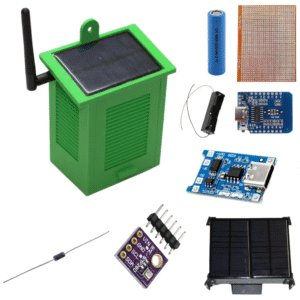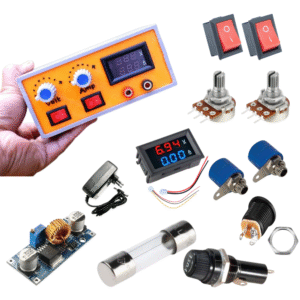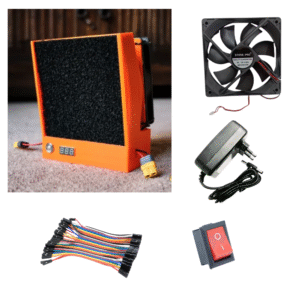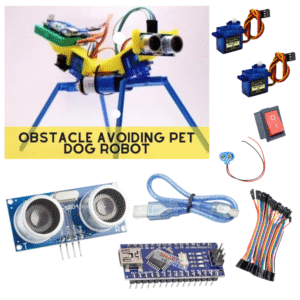Create, Control & Explore: SmartXProKits’ 5 DIY Tools That Bring STEM to Life
1. The Rise of Hands-On STEM Learning
In an era where technology, automation, and smart devices are part of everyday life, doing rather than just reading has become critical in STEM education. Building your own projects gives you not just theoretical knowledge, but real experience with electronics, programming, mechanics, and design. For makers, students, hobbyists—even teachers—DIY kits that combine creativity with technical learning are hugely valuable.
SmartXProKits has been launching some exciting kits lately that let you build something meaningful: control art, monitor weather, extract solder fumes, power your experiments, or make robotic pets. Let’s dive into five of their coolest offerings — and how each can help you learn, experiment, and have fun.
2. What SmartXProKits Offers: Merging Art, Electronics & Automation
SmartXProKits’ lineup shows that STEM isn’t just about raw engineering—it’s also about creativity, environmental awareness, user convenience, and safety. Many of these kits combine 3D-printed parts, microcontrollers (like Wemos D1 Mini/ESP8266), sensors/modules, and realistic utility. That means as you build, you’re also thinking about design, safety, durability, power, user interface, etc. Below are five featured kits that demonstrate this mix well.
3. Kit 1: Tracey Drawing Machine – The Art Robot
What it is: An art robot kit (Tracey Drawing Machine) using the Wemos D1 Mini (ESP8266) and 3D printed parts. It lets you make drawings either via programmed patterns or WiFi control.
Learning Points:
• Understanding servo-based pantograph/drawing mechanics (how movement and gearing translate to pen motion).
• Programming for path control, possibly via G-code or pre-set patterns.
• Use of WiFi/ESP8266 microcontroller to accept inputs or communicate remotely.
• How 3D-printed structure + mechanical parts need calibration & precision.Why it’s exciting: Combines art + robotics. Even people who don’t normally like “tech stuff” enjoy seeing a machine draw. Also opens possibilities for customizing designs, making unique art or gifts.
4. Kit 2: Solar-Powered WiFi Weather Station with BME280
What it is: A weather station kit with Wemos D1 Mini (or similar) and BME280 sensor for measuring temperature/humidity/pressure. Plus WiFi connectivity for real-time remote monitoring. Solar powering or solar components may be included.
Learning Points:
• Sensor integration & calibration (BME280 is well-known for pressure, humidity, etc.).
• IoT basics: sending data over WiFi, setting up dashboards or APIs.
• Power considerations: solar charging, battery, low power usage.
• Enclosure, placement, weather protection, data logging.Why it matters: Useful for hobbyists to learn climate data collection; schools can use it for science projects; home monitoring; seeing environmental changes.
5. Kit 3: Mini Lab Power Supply with XL4015 Adjustable Output
What it is: A compact bench-lab power supply DIY kit using XL4015 buck converter, with volt-amp display, adjustable voltage output, etc.
Learning Points:
• Power electronics: how buck converters work; voltage/current regulation; efficiency, heat dissipation.
• How to read & use display modules; calibration.
• Importance of good wiring & safety (short circuits, proper current limits).Why useful: Every electronics tinkerer needs a stable power supply. Instead of buying expensive ones, you build & understand your tools. Great for small experiments, circuits, testing sensors etc.
6. Kit 4: Solder Smoke Extractor with 3D-Printed Parts
What it is: A DIY fume/smoke extractor to remove harmful soldering fumes etc., built with a high-efficiency fan, 3D printed enclosure.
Learning Points:
• Safety in electronics / soldering work: fumes are bad, ventilation matters.
• Mechanical design: airflow, fan power, quiet operation.
• Enclosure design: filters or mesh, durability, mounting.Why it’s thoughtful: Everyone who solders small circuits will benefit. Also helpful for people working indoors or in small workshops. Teaches health/safety and design.
7. Kit 5: Obstacle-Avoiding Dog Robot – Robotics + Sensors
What it is: A pet-robot style robot dog that can detect obstacles using sensors (likely ultrasonic or IR), with a 3D printed body. Arduino-based, movement, walking or wheel-movement etc.
Learning Points:
• Sensor integration & decision logic: obstacle detection & avoidance.
• Actuation: motors / servos to move legs or wheels; balancing, coordination.
• Mechanical design: body shape, weight distribution.
• Programming for movement patterns, possibly remote control or autonomous behavior.Why fun: Pets are popular, so robot dog is both cute & engaging. Great motivation for beginners to keep building & improving. Also opens scope for upgrades (adding voice, remote control, camera etc.).
8. What You’ll Learn from These Kits
Putting together these kits offers a wealth of skills:
Electronics: sensors, microcontrollers, power supply, wiring, noise, voltage/current.
Programming & IoT: controlling devices, reading sensor data, sending info via WiFi, dashboards etc.
Mechanical Design: 3D printing, structural stability, assembly, tolerances.
Art & Creativity: drawing machines, design, customizing enclosures.
Safety & Practicality: ventilating solder fumes, stable power, durable builds.
Environmental Awareness: solar power, efficient design, remote monitoring to reduce waste etc.
9. How to Choose the Right Kit for Your Level & Needs
Here are factors to help you pick:
| Factor | What to Consider |
|---|---|
| Experience Level | Are you new to electronics/3D printing or have some prior work? The power supply or robot dog may need more skills than a simple weather sensor. |
| Tools/Materials Available | 3D printer, soldering iron, basic tools, power source etc. Do you have or need to acquire them? |
| Power Constraints | For example the WiFi kits eat more power; battery vs mains; solar vs AC. |
| Purpose | Is the goal learning? Display/decoration? Practical use? Gifts? Home use? |
| Environment Constraints | For weather station: outdoor robustness; for smoke extractor: placement & filter maintenance; for robot: durability / terrain. |
| Budget & Support | Costs of replacement parts, documentation, community or manufacturer support for firmware/code, spare mechanical parts if breakage. |
Conclusion
SmartXProKits’ latest offerings are a treasure trove for anyone who wants hands-on experience in robotics, IoT, maker culture and creative technology. Whether you want to build an art robot, monitor your environment, build tools for your electronics bench, improve safety in your workshop, or make a cute robotic companion—there’s a kit here that ticks those boxes.

























